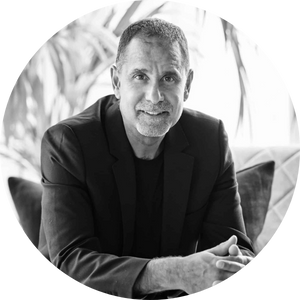How can senior executives achieve superior results in turbulent times?
As the new chief executive for a global company, Jane was responsible for overall performance in over 70 different counties, with main hubs in Singapore, New York and London. On the outside, results looked good. There appeared to be a growth trajectory, based on metrics like market share, sales revenue, net profit margin, gross margin, customer loyalty, retention, profit, net promoter score and employee engagement. However, as Jane dug into the detail, the veneer of success began to peel away. She had a gradual awakening: the results had been manipulated to paint a glossy picture for shareholders. They didn’t provide the whole picture. Jane brought together her executive committee for an extraordinary meeting to address the facts. She set the context by creating a safe environment for the truth to be put on the table. Realization dawned for each executive member in turn. The minor adjustments of numbers added up to a brutal reality which needed to be addressed immediately.
As an executive coach, I often encounter performance scenarios where leaders come under huge pressure to deliver in the midst of internal or external challenges. There are three stages to manage which ensure a robust approach for the way forward: 1. Deliver results; 2. Lead today; 3. Develop tomorrow.
1. Deliver results
Jane made her starting point a review of the key metrics being measured. The team aligned on a refreshed dashboard consisting of 10 success metrics to deliver which boiled down to three main areas – colleagues, customers, and cash. Beginning with the end in mind, the team identified the outcomes for each metric, enabling them to align on vital priorities to drive. They broke these down into major projects, which – if delivered on time and budget – would move the business in the right direction. Each executive team member took accountability for key areas and agreed to work in 90-day sprints to provide absolute transparency of outcomes and activities.
Results are your proof points. They build your credibility and become your springboard for bigger and better things. In the words of Jan Smits, CEO and deputy chair, Asia-Pacific, Pro-invest Group: “As a leader, it is essential to have absolute clarity and alignment about what you are going to deliver and how you are going to deliver it. This starts by clarifying your strategic plan and designing the right organizational structure so that you have the right people in the right roles for delivery.”
Smits always links purpose with performance to deliver optimal results. “To build a performance-driven culture requires having a clear purpose, setting up delivery targets, measuring milestones, communicating progress, and celebrating wins,” he explains. “It is vital to have an environment where people can provide open and honest views about ongoing performance, and encourage each other along the way.”
Having clarity about the results to deliver is the starting point. It is then essential to be set up for success. Make sure your organizational design is aligned to what you are trying to do. If not, employees will be suboptimal in their performance and eventually burn out. You can also understand the effectiveness of your organizational design by measuring employee engagement, which can reveal your pinch points and what you need to address in order to be fit-for-purpose.
To ensure successful delivery, you must also get the right balance between the teams who go out and win the work, and the teams who deliver it. The need for having the right structure was reinforced by Dr Sam Barrell CBE, deputy chief executive of the Francis Crick Institute. “To manage performance against the company ambition, it’s vital to be clear about how it translates for all individual functions,” he explains. “Every team has their own objectives that are set on a three-year horizon and against which they create their KPIs. As an organization this means we can make decisions in the context of the overarching scorecard.” To track and monitor performance, the Institute initially used multiple software systems, which were not set up to produce centralized data. “We changed this to enable us to have a view about how the business was performing as a collective,” says Barrell. “We benchmarked against each service, and created a heatmap about where we were, and how well our services were landing with our scientists.”
Once you have created sufficient clarity and structure for delivery, the next priority is to provide the right environment for high performance.
2. Lead today
Lack of resources – including people, finance and supplies – can cause performance to slow down, or to go off track. The recent combination of the Great Resignation, spiraling costs and supply shortages are putting extraordinary pressures on companies to deliver, requiring leaders to make tough choices for the good of the business.
The reality of leading today is captured by Sophie Devonshire, chief executive of The Marketing Society, when she says: “We are playing catch up from Covid. There is tension and tiredness across businesses. However, wellbeing has to be balanced with the delivery of business needs.”
Devonshire has given employees “time sovereignty”, with managers focusing on outcomes rather than hours worked. “We are building it as a culture based on an acceptance that the way we drive performance has changed in the workplace.” Celebrating success along the way is key, she adds: “What we sometimes forget is the thrill of achievement. It’s vital to show people the progress they have made, which also boosts energy. It is very motivating to be part of a team that delivers and to have pace driven by progress.”
In my book, How to be a CEO, the challenge of leading today was clearly articulated by Amy Edmondson, Novartis professor of leadership and management at Harvard Business School. “As CEO you must hold the dual focus of value creation and delivery. You create value by investing in innovation, and deliver it through operational excellence. You need to be willing to invest in the uncertain work of innovation and be prepared to experiment with new ideas and markets. You then need to rally people to deliver.”
This is true for all leaders. A four-step process can support leading today.
- What does success look like? What are the objectives to achieve?
- What options are available?
- What the opportunities, threats and mitigations for the options?
- Execute the plan and review based on new information.
Another vital ingredient is to take the complexity of a business and create a simple narrative to tell the story, so that people quickly get what’s going on. Simplifying complexity is a real skill to master. You need to have a framework to build the narrative. I suggest using a structure based on a house, building the story on the back of the vision, purpose, priorities and culture.
To create this framework, you need to be immersed in the business before standing back and asking: “What are we about? What are our key focus areas? What are the strategies we need to focus on?” CEOs should develop a clear and simple framework to answer those questions, and ensure that the level of detail is the same for all colleagues. People look to leaders for the macro and micro view of the business: the best leaders know when to stay high level, and when to get into the detail, on the right things.
There is an interesting paradox here. As you move up the leadership chain, you tend to not get your hands dirty with details – yet you need to be ready to plunge in when required. Sometimes it’s only you who can ask the right question. You might have an intuition based on experience and need to test and validate it. Other times, through listening and sensing when something is lightweight, you will need to push down to see if there is anything of significance to unearth.
3. Develop tomorrow
Probably the most important role of a leader is to help build a sustainable organization that leaves a company, and the world, in a better place. This can cover multiple levels, including the creation of a long-term growth strategy, building enduring organizational capability, developing a robust talent pipeline, and enabling an inclusive culture.
I am a big believer in the way that Keith Barr, former chief executive of IHG, assesses the value of leaders for delivering sustainable success: “It is important to recognize that there are certain things only you can do.”
At the most senior levels, Barr identifies four key areas to lead a business.
- Strategy – have crystal clarity about the plan
- Capability – have the right machine to deliver the plan
- Talent – have the right talent to deliver the capability
- Culture – have the right culture to deliver the strategy based on an environment of openness and transparency to enable you to move quickly.
To develop tomorrow, invest in your strategic thinking. You need the ability to take a complex set of data and synthesize it down to what matters. It’s important to understand where the noise is, and what really makes a difference. You need to be able to see around corners. It’s relatively straightforward for executives to think about what they have to do next year. However, a standout leader thinks longer-term and has the ability to anticipate the future without having clarity about all the moving parts.
You need to ask yourself big questions such as: in 15 years from now, what will success look like? Where does the business want to be? How could we get there? You need to think bigger and longer-term, and help others to expand their thinking about the future. Recognize that the decisions you make today will impact the company in five and 10 years. You have to manage the short and long term.
Once you have the strategy in place, it is essential to develop the right culture to unlock performance. Let’s bring back Jane, who had sufficient awareness to understand that the way she would be able to lead tomorrow was to give people the benefit of the doubt about the past, and to collectively find solutions. She recognized that the previous culture had created an environment where people needed to present everything as ‘good news’, which meant that results were manipulated to fit the message.
Jane was a firm believer in the power of psychological safety. She took the necessary steps by setting clear expectations, ensuring everyone had a voice, and enabling people to take calculated risks.
Once Jane had addressed the basics, she was then able to escalate the sustainability agenda.
This means more than just the environment. Leaders need to focus on every aspect of the ESG agenda, knowing that they cannot get away without scrutiny.
In the future, the impact of leaders will start with sustainability and end with performance, because the social context is key for the business. Elements like diversity, equity and inclusion, employee wellbeing, and integration in the community are fundamental.
Energize your people
Taking a broader approach to performance is highly energizing for people, and ensures that you have a balanced scorecard for delivering today and developing tomorrow. Challenge yourself to think differently and innovate for future success. Be prepared to reinvent. If you rest on your laurels today, you will be history; if you shine from within, customers will buy into your passion.
Remember: every day, you have the opportunity to deliver great results, which will be a blueprint for further success. Every day, you have the opportunity to lead through today’s complex world, which will equip you to think big and act small. Every day, you have the opportunity to build a better tomorrow, by being a leader of the future.




